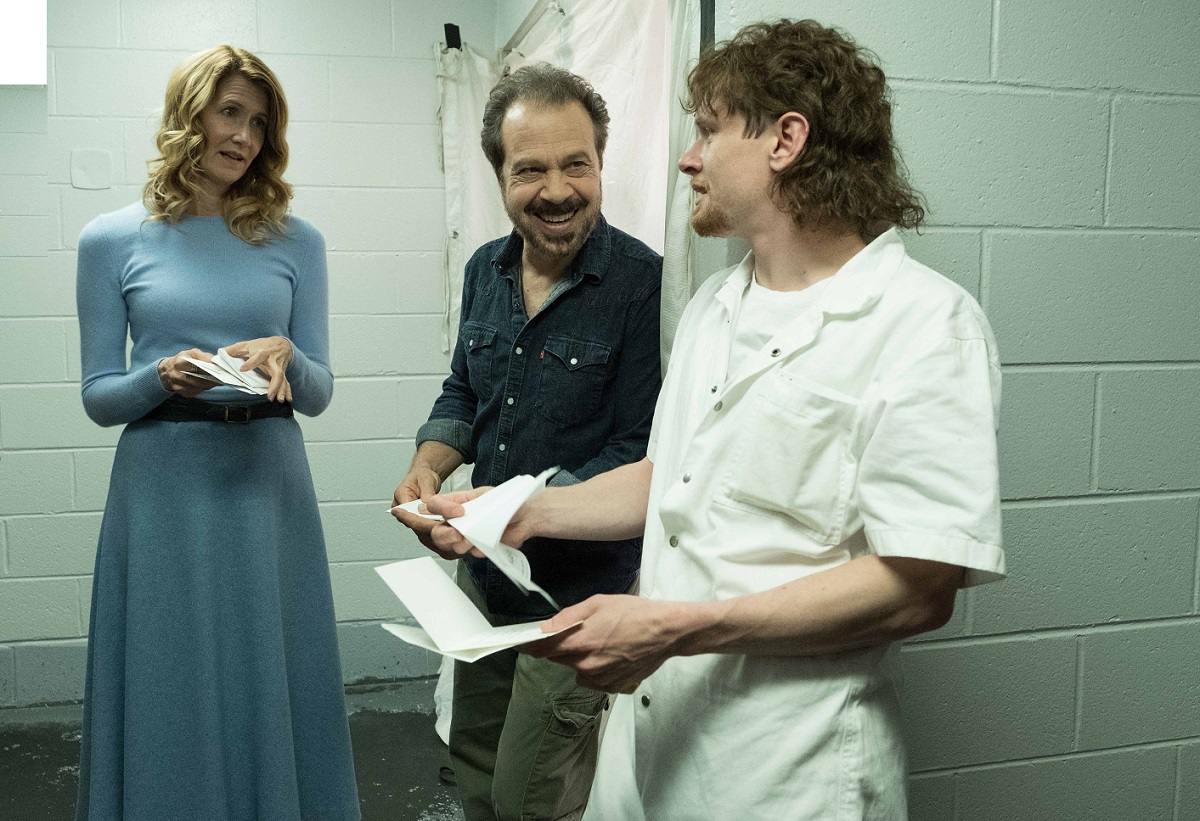How did you prioritize the hybridization of genres in this movie during the pre-production and principal photography? It’s part courtroom drama, part prison drama, part beautiful, dual character study of friendship, and part redemption story.
That’s a really good question. Really at the script phase because you want each of those things to be organic to the other. If you feel that you’re trying to, in some way, separate them, it’s often a problem. But in this case, it was a very unusual structure, which is to say to withhold Laura’s introduction as someone would have experienced the case. It would have been very easy to have had her in her home listening to the trial or going to the courtroom. I could have integrated her into it, but it wouldn’t have been the true experience of somebody coming from the outside. She would’ve had preconceptions.
And similarly, [Jack’s] initial incarceration, and solitary, and all of this was a way of putting him in this place as an actor and as the man must have been, and Laura in this place of when they come together – I literally kept them apart. They had not worked together until those scenes. I wanted those scenes to contain the discovery and the surprise that it would have had of meeting the other person, and shoot them in some way that were in continuity.
I found the dream sequences to be a really nice touch in the film. Were these included in the script?
It’s something that I added, but certainly, Geoffrey was interested in. The funny thing is, as we came to know Elizabeth, the idea that he would talk to his daughter was something that I had imagined, and Elizabeth said it was entirely true. Not anything that we could have known, but just somehow following what was there in the letters, it seemed to be organic. It was Geoffrey’s touch, the idea that in writing to each other, they might just drop in on each other’s lives.
And the magical realism of that came about by sitting there, saying, “Well, how hard is it to sit alone for five minutes? How hard is it to sit alone for an hour? How hard is it to sit alone for a day? How hard might it be to sit alone day after day? What would happen to your mind in that context?” And I tried to really think of, “What do daydreams look like?” I know what nightmares might look like because all of us filmmakers try to do that. But what would it be in solitary? And how ephemeral is memory, or how specific? And that was the challenge of that.
Fletcher’s script has a lot to say about the corruption of the criminal justice system, prison industrial complex, and the education system.
What they have discovered is that there is such a thing as rehabilitation. You look at what happens in a lot of countries in Europe; there have been extraordinary empirical data of that success. And that it would happen here in this cruelest of circumstances is one of those horrible ironies. But the men that I’ve spoken to, and men on death row as well, say that you make a choice every day. The choice is despair or it’s to actually try to live that day as if it is a real day in your life.
Have you noticed much progress in the aforementioned institutions since Willingham’s case?
There’s been great movement in the junk science of arson, where, in fact, the forensics have gotten much better and a couple of convictions have been thrown out based on this new science. What happened even here two weeks ago with Gavin Newsom and the moratorium on the penalties may be the crest of a wave, I’m hoping. But there are a lot of places still. And one of the places is the White House. Trump took out a full-page ad, if you recall, about the Central Park Five when they had not even been brought to trial, before they were exonerated. Progress? Yes, but whatever the opposite of progress is at the same time.
Speaking of the White House, this film is gonna piss off a lot of right-wingers in a great way.
Oh, I hope so [laughs].
Do you hope that this film furthers the discourse of what’s going on with the morality and the legality of the death penalty?
It is a moment where there’s a new trope in the culture. It used to be crime and punishment. And crime and innocence is rising. If you think about the Serial podcast, “Making a Murderer,” and some of the other documentaries, there are [also] several different podcasts about this system. Because there is an unpunished predator at the top of the system at this moment, there is an awareness of injustice, and that can’t help but be something that this might plug into. At least I would hope so.
Do you have any forthcoming projects you’re eager to start?
Jason Katims and Matt Reeves are guys who I brought to come work with me on “My So-Called Life” a long time ago. They have a show on Netflix and asked if I would do the pilot. And I haven’t done that for anybody ever, but I really love them. And I think we’ll do it with Hilary Swank.
“Trial by Fire” hits theaters on May 17.





